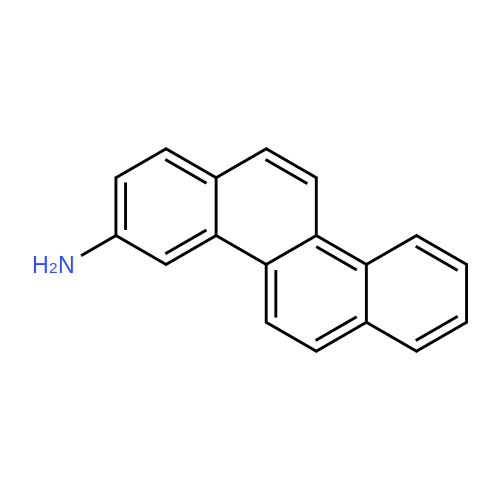Retention Behaviors of Pre-Column Derivatized Mono-, Di-and Oligosaccharides in Various Modes of High Performance Liquid Chromatography
Vaithilingam Rajendiran
;
Ziad El Rassi
;
J. Chromatogr. A,2022,1682,463508.
DOI:
10.1016/j.chroma.2022.463508
PubMed ID:
36155077
More
Abstract: Three LC-based methods, including reversed-phase chromatography (RPC), ion-pair RPC and weak anion-exchange chromatography (WAX), were examined in the separations of precolumn derivatized mono- and oligosaccharides with the following three tagging agents: 1-naphthylamine (1-NA), 2-aminoanthracene (2-AA), and 3-amino-2,7-naphthalenedisulfonic acid (ANDSA). Due to differences in their charges and polarity, the three tagging agents imparted the sugar derivatives varying elution patterns in the three, just mentioned, chromatographic modes. While RPC yielded high resolution separations for 1-NA- and 2-AA-sugar derivatives, ion-pair RPC in the presence of the ion-pairing agent dodecyl trimethylammonium bromide (DTAB) in the mobile phase exhibited far more resolution and selectivity than WAX in the separation of ANDSA-sugar derivatives. This finding portrays the fact that an octadecyl column operating in ion-pair RPC mode can eliminate in most cases the need for an ion-exchange column for bioanalytical separations of ionic or ionizable species. Lastly, the characteristics of each chromatographic mode in the analysis of derivatized sugars are described using various mobile phase compositions.
Keywords:
Derivatized sugars ;
UV-absorbing tags ;
Reversed-phase chromatography ;
Ion-pair chromatography ;
Anion-exchange chromatography
Purchased from AmBeed:
613-13-8

Reversed-phase capillary electrochromatography of pre-column derivatized mono-and oligosaccharides with three different ultraviolet absorbing tags
Vaithilingam Rajendiran
;
Z. El Rassi
;
J. Chromatogr. A,2022,1671,463025.
DOI:
10.1016/j.chroma.2022.463025
PubMed ID:
35421735
More
Abstract: In this research report, an in house developed octadecyl monolithic (ODM) column has been exploited in the reversed-phase capillary electrochromatography (RP-CEC) of precolumn derivatized mono- and oligosaccharides with three different tagging agents, namely 1-naphthylamine (1-NA), 2-aminoanthracene (2-AA) and 3-amino-2,7-naphthalenedisulfonic acid (ANDSA). These three derivatizing agents, which differed in their charges, nonpolar characters and optical absorption properties, led to different RP-CEC elution patterns and UV detection signals. In fact, the limit of detection of the derivatized sugars were 50 μM for the ANDSA- and 1-NA-sugar derivatives and 35 μM for the 2-AA-sugar derivatives due to the presence of three fused aromatic rings in 2-AA versus 2 fused rings in the 1-NA and ANDSA tags. Furthermore, while the longer ANDSA-oligosaccharides eluted later than the shorter ones and the ANDSA-monosaccharides, 1-NA- and 2-AA-sugar derivatives necessitated the presence of borate ions at alkaline pH in the mobile phase to form in situ charged derivatives to facilitate their separation by RP-CEC, and the elution order was the reversal of that observed with the ANDSA-sugar derivatives; that is the mono- eluted later than the larger size oligosaccharides. In addition, plots of log tR vs. number of glucose residues (nGlc) for derivatized glucose and maltooligosaccharides yielded straight lines with slopes representing log η where η is the retention time modulus (i.e., ratio of retention time of two neighboring derivatives differing in one glucosyl residue). In the case of 1-NA and 2-AA derivatives, η was smaller than unity while it was greater than unity in the case of ANDSA-sugar derivatives because the elution occurred in the order of decreasing size of the homologous sugar derivatives in the former than in the later derivatives. The prepared ODM column was stable for more than a month of continuous use, a fact that allowed a good repeatability for intraday and interday analyzes.
Keywords:
Reversed phase ;
Capillary electrochromatography ;
Derivatized mono- and oligosaccharides ;
Precolumn derivatization
Purchased from AmBeed:
613-13-8


 Chemistry
Chemistry
 Pharmaceutical Intermediates
Pharmaceutical Intermediates
 Inhibitors/Agonists
Inhibitors/Agonists
 Material Science
Material Science















 For Research Only
For Research Only
 120K+ Compounds
120K+ Compounds
 Competitive Price
Competitive Price
 1-2 Day Shipping
1-2 Day Shipping
















